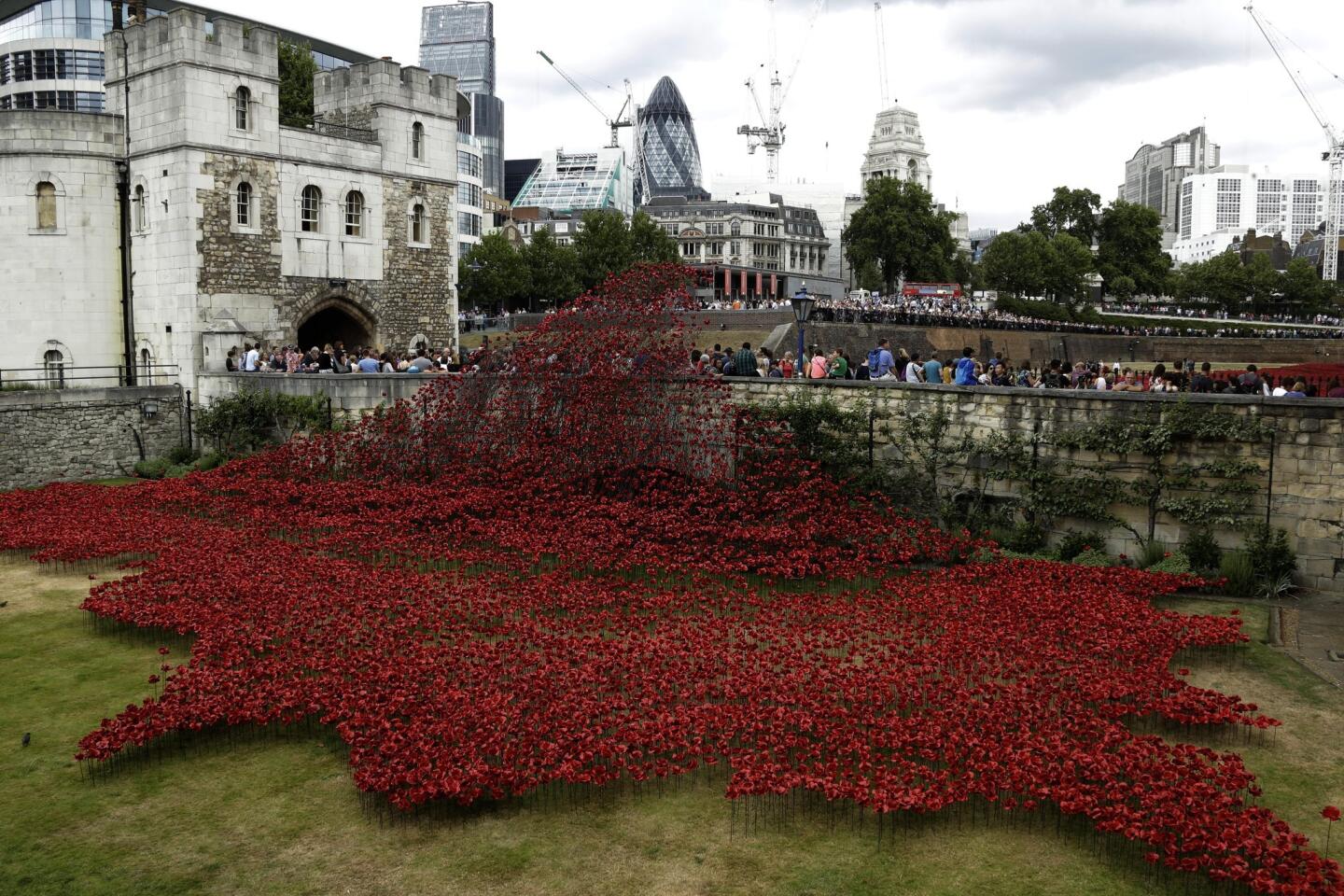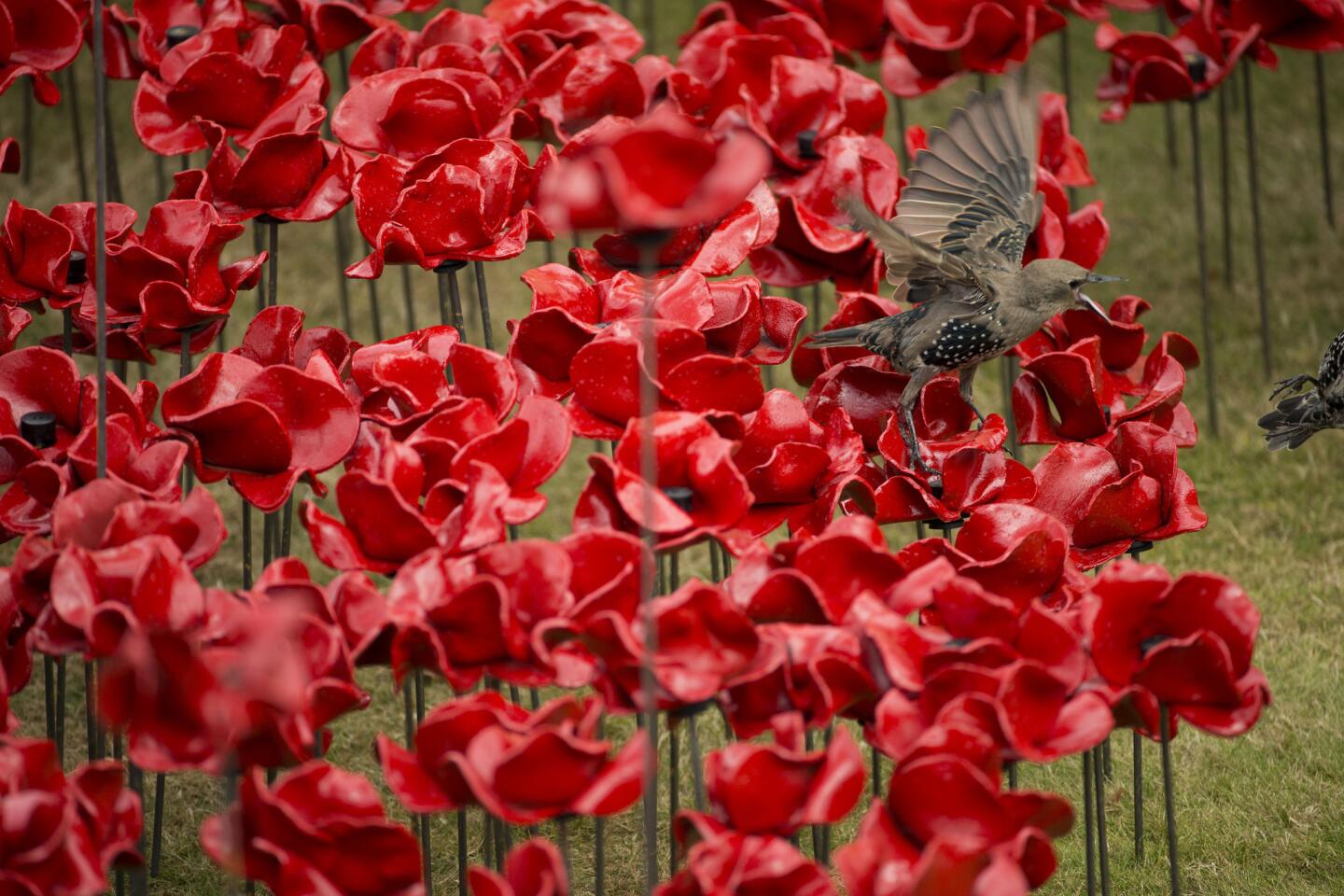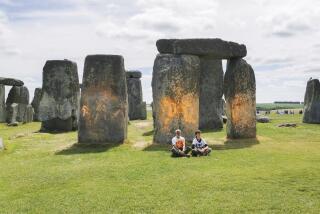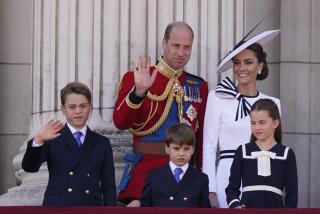London honors fallen WWI soldiers with sea of ceramic red poppies
A hundred years ago, the men who joined the British army during World War I came by the millions -- from England, of course, but also from Scotland, Wales, Ireland, Canada, Australia, South Africa and other then-Commonwealth lands.
Now those who died -- 888,246 of them -- are being remembered by the “planting” of the same number of handmade ceramic red poppies at the Tower of London, a commemoration marking the 100th anniversary of the start of the war.
Visitors heading to the city will be able to see the massive art installation, which was unveiled Tuesday and is called “Blood Swept Lands and Seas of Red.” The poppies were designed by artist Paul Cummins and will remain until Armistice Day, or Veterans Day, on Nov. 11.
The best viewing of the field (visitors won’t be allowed to walk among the flowers) is from Tower Hill along the moat path, according to the landmark’s website. It’s free; no tickets required.
In the meantime, volunteers will continue to add to the massive sea of red in the dry moat around one of the city’s most famous landmarks. The final poppy will be put into the ground Nov. 11. London and all of Europe have been marking the anniversary of the war that took more than 17 million lives of soldiers and civilians.
Bright red poppies became the symbol of the war because these flowers sprouted among the bodies at battlefields in Belgium, France and Gallipoli in Turkey. They were made famous by the poem “In Flanders Field” by John McCrae.
Why was the tower singled out for the installation? The castle and fortress from the 11th century was used as a recruitment and swearing-in location for troops during World War I. It’s also the place where wartime spies were held and even executed.
On Tuesday, Prince William and his wife Kate, Duchess of Cambridge, and brother Prince Harry each added one ceramic flower to the field.
After Nov. 11, the poppies will be removed and sent to supporters who bought them for 25 British pounds ($42) each. Proceeds from the sales will go to British charities.
Info: Tower of London
More to Read
Sign up for The Wild
We’ll help you find the best places to hike, bike and run, as well as the perfect silent spots for meditation and yoga.
You may occasionally receive promotional content from the Los Angeles Times.













